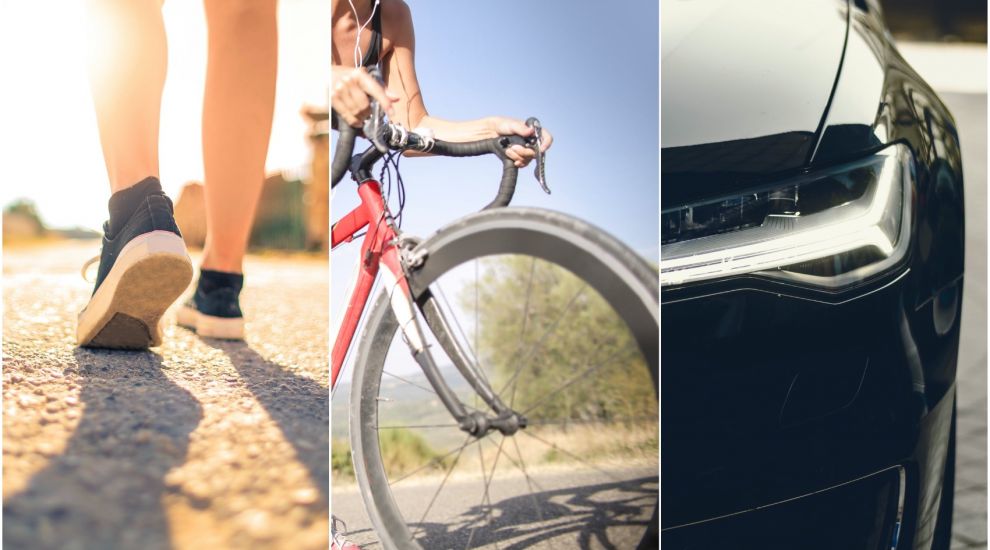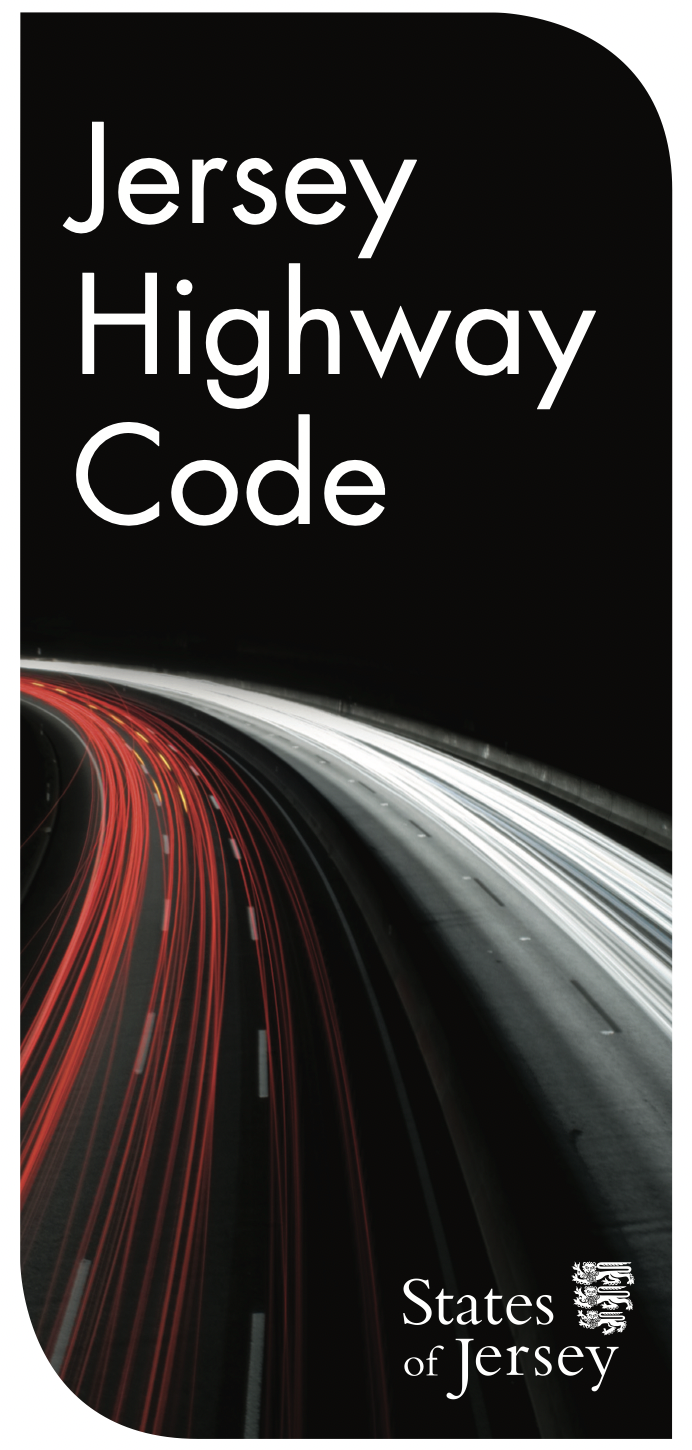


Changes to the Highway Code giving cyclists priority over cars, and giving pedestrians the right of way at junctions, are due to be coming into force in Jersey at the end of the month.
Jersey currently follows the UK when it comes to the Highway Code, with some tweaks to adjust for the island’s roads.
After going through a parliamentary approval process, the new rules - which the UK government says will make “roads safer, particularly for the most vulnerable road users” - are now expected to come in on 29 January.
A spokesperson for Jersey's Infrastructure Department told Express that the island is likely to adopt all of the new adjustments if they come in with no tweaks.

Pictured: Jersey's Highway Code follows the UK, with tweaks for Jersey's own roads - there are some concerns these haven't been made clear with the new rules.
The spokesperson added that the Government is planning a campaign informing islanders about the changes to the code soon, but many individuals in the cycling community feel that this should have been done sooner.
Here, Express outlines some of the key features of the new code…
H1 - The Hierarchy
The underlying principle, and first rule of the new code from the UK, is a hierarchy that puts “road users most at risk in the event of a collision at the top.”
It classifies those most at risk as pedestrians, cyclists, horse riders and motorcyclists, with children, older adults and disabled people being more at risk.
It says that those in charge of vehicles “that can cause the greatest harm” bear the greatest responsibility for danger to others - in particular, it namechecks drivers of large goods and passenger vehicles, vans/minibuses, cars/taxis and motorcycles.
H2 - Vehicles must give way to pedestrians crossing at a junction
Drivers, motorcyclists, horse drawn vehicles, horse riders and cyclists must give way to pedestrians crossing or waiting to cross at a junction.
Cyclists should also give way to pedestrians on shared use cycle tracks.
H3 - Cyclist and horse priority at junctions
Drivers should not cut across “cyclists, horse riders or horse drawn vehicles going ahead when [they] are turning into or out of a junction or changing direction of lane, just as [they] would not turn across the path of another motor vehicle” or if it looks like it will make them swerve.
They add that, instead, they should wait for a safe gap if necessary, at times such as when cyclists are:
As well as this main hierarchical shift, a number of other significant changes would come into place with the update, including a recommendation of default positioning on the road for cyclists.

Pictured: Cars turning in will have to give way to pedestrians under the new rules.
As well as these positions, road users are to be advised of the following updates:
When sharing space with them, cyclists should not pass pedestrians, horse riders or horse drawn vehicles closely or at high speed, particularly from behind, or a horse from its left.
If a cyclist is going straight ahead at a junction, they have priority over those turning in or out of the side of the road, unless road signs or makings indicate otherwise.
Drivers should leave at least 1.5 metres of space when overtaking cyclists at speeds of up to 30mph.
Drivers should pass horse riders and horse-drawn vehicles at speeds under 10mph and allow at least 2 metres of space.
Cyclists will now be allowed to cycle two abreast on the road, with the advice go into single file let drivers behind overtake when it is safe to do so.
Where possible, drivers should open the door using the ‘dutch method,’ meaning to open the door using your hand on the opposite side to the door you are opening - this will make drivers turn their head to look over their shoulder.
“These important changes to the UK’s Highway Code will flow into Jersey’s version, and will come into force here on 29 January," said Deputy Kevin Lewis.
“The updates will, in particular, improve safety for cyclists, pedestrians and horse riders."

Pictured: The Infrastructure Minister said the updates would come into force at the same time.
He continued: “We will, of course, be highlighting the key changes to the Highway Code through a timely awareness and media campaign over the coming weeks, and I’d encourage road users to make sure they are familiar with the updated Code when the UK DVLA publish it at the end of the month.
“The changes align with the work that we’re doing as part of our recently released Island Road Safety Review, and assessment of existing legislation to identify the benefits of introducing a hierarchy of responsibility of road users.
“This work is being carried out over the first half of this year and will feed into our upcoming Road Safety Strategy.”
Some have questioned how much the Minister has prepared for these changes coming in and thought about applying them to Jersey’s own roads. They are concerned that some elements may not be workable in Jersey.
St. Helier Procureur and Roads Committee member Geraint Jennings explained: “In order to know what the rules are of the road in Jersey, you need to have the UK Highway Code currently in force, plus the Jersey Code which adapts, modifies and applies certain parts of the UK Highway Code.
He added there was an additional element too - “Jersey Law... takes priority over the UK Highway Code. So when the UK Highway Code says 'you must' or 'must not', that refers to what is the law is in the UK, but not necessarily what the law is in Jersey.”
Giving some examples, he outlined how Jersey differs in its approach to crossings.
“There are new rules regarding the toucan crossings for cyclists, but the thing is that in Jersey there’s no legal difference between a pelican and a toucan, and cyclists are perfectly entitled to use a pelican crossing because there’s no legal difference from a toucan crossing, or indeed a zebra crossing.
He added some new rules also revolved around parallel crossings, which are not legal in Jersey.
Some critics have also raised queries about the new rule that drivers should leave 1.5m when overtaking cyclists at speeds of up to 30mph, noting that some of Jersey's smaller roads may not be able to accommodate this gap.
Commenting on how well the Government has prepared for the changes, Mr Jennings said: “Everyone’s been waiting for the Minister to make a decision that this is actually coming into force or not - but he has expressed no opinion of the proposed changes during the UK Government’s consultation period, so nobody in Jersey knew what the Minister’s attitude would be to the changes, and whether he was minded to apply them or modify them or otherwise.”
He said this lack of awareness or clarity was not “the most responsible attitude to take”, saying he thought “a lot of motorists are unprepared, and we risk having lots of complaints about cyclists cycling absolutely in conformity with the Highway Code in force from 29 January.”
Cycling advocacy group Cycle4Jersey also said it appeared Deputy Lewis had been “asleep at the wheel”, having failed to scrutinise and publicise the changes sooner.
Answering queries from Express, the Government have said they held off on doing anything with the new rules as previously it had not been certain if they were coming in or not due to the Parliamentary approval process.
Comments
Comments on this story express the views of the commentator only, not Bailiwick Publishing. We are unable to guarantee the accuracy of any of those comments.